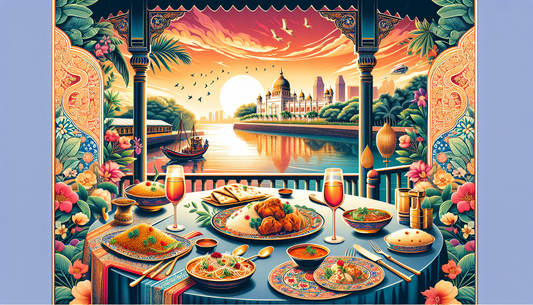
Navigating Evolving Health Narratives in Wine Marketing Strategies
Heath Wells HealthShare
As the global wine industry navigates the intersection of marketing strategies and health narratives, producers are innovatively rebranding to reflect the growing emphasis on wellness. This strategic shift aims to cater to health-conscious consumers and comply with evolving regulations.
- Wine producers in regions like Napa Valley, California, and Bordeaux, France, are focusing on health-centric narratives in marketing campaigns. 🍇
- Influential winemakers, such as Jessica Cortes of Sonoma Wine Co., are championing transparent labeling and sustainable practices.
- Recent studies linking moderate wine consumption to certain health benefits are being cautiously integrated into marketing, while avoiding overstatement. 📊
- In August 2023, the European Union introduced stricter guidelines on health claims in alcohol advertising, prompting wineries to adapt quickly.
- Hybrid events in October, such as the Wine & Wellness Expo in Barcelona, have showcased innovative trends in the industry, combining wine tasting with health and nutrition seminars.
- Digital marketing now plays a crucial role in these strategies, with brands like Tuscany-based Chianti Classico using engaging social media content to share their updated messaging. 📱
This evolving narrative not only reshapes marketing strategies but also reflects a broader commitment to aligning with the health-focused priorities of today’s consumers.
The wine industry, with its complex interplay of tradition and modernity, has long navigated shifting health narratives that influence consumer choices. With a history that dates back centuries, the wine market is no stranger to evolving messaging. From the ancient Romans who heralded wine's health benefits to modern-day marketers targeting health-conscious millennials, wine has always been at the intersection of indulgence and wellness. Yet, today's shifting health messages mark a significant departure from the past. They reflect deeper societal changes and a more informed consumer base.
Recently, the wine industry has seen a notable pivot in how it communicates health-related messages. Historically, messaging emphasized wine's antioxidants and potential heart benefits. As science delves deeper into alcohol's effects, new findings challenge previous assumptions. These developments shape how brands craft their marketing strategies. Moreover, they influence consumer perception and purchase decisions. It's not just about promoting a product; it's about aligning with contemporary health values.
The shift in marketing strategies can be traced to several significant factors. First, there's increasing competition from other alcoholic beverages. Craft beers and innovative cocktails capture consumers' interest, especially younger demographics. Consequently, wine marketers are pressured to differentiate their offerings. The second factor stems from global health trends. The World Health Organization (WHO) and other health bodies continue to revise guidelines on alcohol consumption, often emphasizing moderation and potential risks.
The Role of Influential Figures in Wine Marketing
Influential figures have historically shaped wine marketing. Winemakers, sommeliers, and even celebrities often championed wine's health benefits. Figures like Robert Mondavi revolutionized wine's image in the United States. Mondavi emphasized wine's sophistication and potential health benefits. However, as modern consumers become more savvy, traditional endorsements carry less weight. Social media influencers and health experts now have a significant impact on public perception.
Today, wine marketing campaigns need to adapt. Brands collaborate with health professionals and influencers to craft credible messages. For example, campaigns may highlight moderate consumption as part of a balanced lifestyle. This approach resonates with younger audiences who prioritize authenticity and transparency.
Geographical Influence on Marketing Strategies
The geographical location of a wine brand also plays a crucial role. European brands might lean into tradition and heritage, emphasizing regional authenticity. Meanwhile, New World wine regions such as California or Australia push innovation and sustainability. Each approach ties into broader health trends, from biodynamic farming to low-intervention winemaking.
Brands from regions like Bordeaux or Tuscany highlight centuries-old practices. They merge historical legacy with modern sensibilities. This dual approach appeals to consumers who seek authenticity. On the other hand, wineries in Napa Valley or the Barossa Valley often emphasize cutting-edge techniques. They address environmental concerns, further appealing to health-conscious consumers.
Timeline of Evolution in Wine Health Messaging
To better understand the evolution of health messaging in wine marketing, consider this timeline:
In the early 1900s, wine was often advertised in medicinal contexts. Advertisements emphasized its role in improving digestion and circulation. During the 1970s and 1980s, research brought antioxidants into the spotlight. The "French Paradox" suggested that moderate wine consumption could be beneficial to heart health. It was a pivotal moment that reshaped wine's image.
By the early 2000s, global health initiatives began challenging these notions. Campaigns focused on responsible drinking and moderation. In recent years, there’s been a growing awareness of the risks associated with alcohol. Countries are tightening regulations around health claims in alcohol advertising.
Adapting to Changing Consumer Preferences
As consumer preferences evolve, so too does wine marketing. Today's consumers, especially millennials and Gen Z, seek authenticity and purpose from brands. Wine companies are responding by promoting transparent labeling. They increasingly advertise organic and eco-friendly production processes. This strategy addresses health and environmental concerns, appealing to a conscientious demographic.
In response, some brands openly discuss potential health implications. They acknowledge the complexity of the alcohol-health relationship. Others are developing low or no-alcohol options to cater to diverse preferences. This innovative approach acknowledges the modern consumer's desire for choice and control.
The Impact of Digital Media on Wine Marketing
Digital media has a profound impact on wine marketing strategies. As consumers turn to the internet for information, brands invest heavily in online presence. Engaging content, from blog posts to social media campaigns, plays a central role. Brands leverage these platforms to communicate health messages effectively.
Webinars, virtual tastings, and interactive experiences engage consumers directly. Brands use these tools to educate audiences on moderation and responsible consumption. Additionally, search engine optimization (SEO) ensures that health-related content reaches a broad audience. Through targeted keywords and phrases, brands connect with health-conscious consumers actively seeking information.
Overall, digital channels provide brands with insights and feedback. They allow continuous adaptation and refinement of health messages. Data-driven decisions help align marketing efforts with consumer interests and concerns.
In conclusion, the wine industry continues to adapt its health messaging. It acknowledges evolving scientific findings and consumer preferences. By embracing transparency, innovation, and digital media, wine brands successfully navigate these complex waters. Ultimately, their success hinges on their ability to authentically connect with their audience. It’s about crafting narratives that resonate with modern values and inspire responsible enjoyment.











